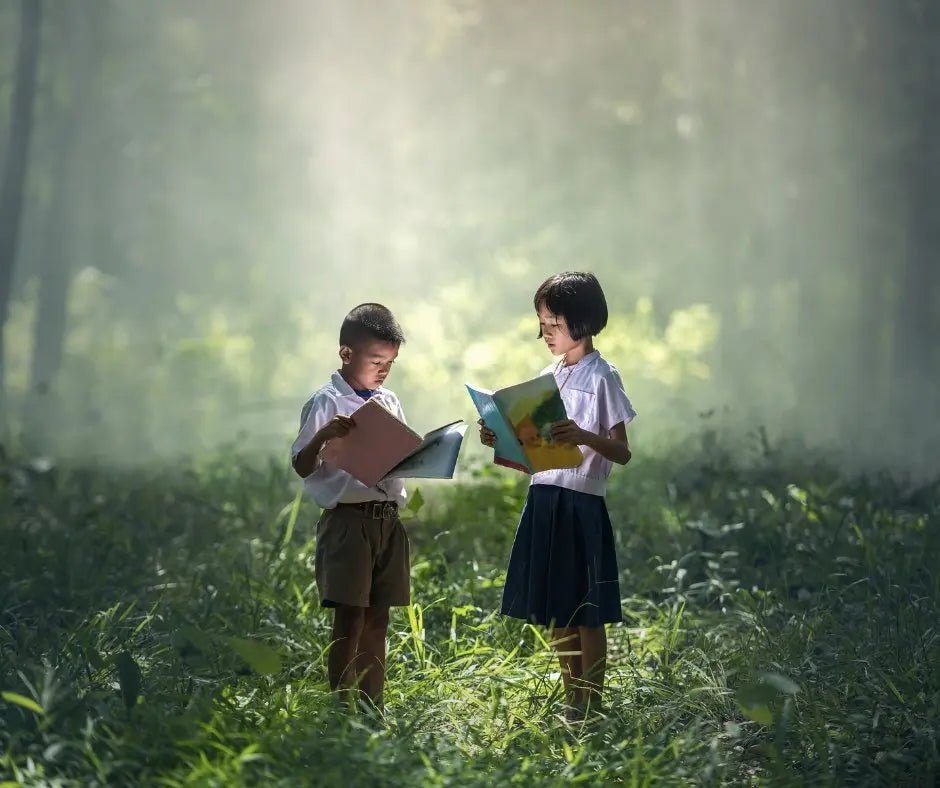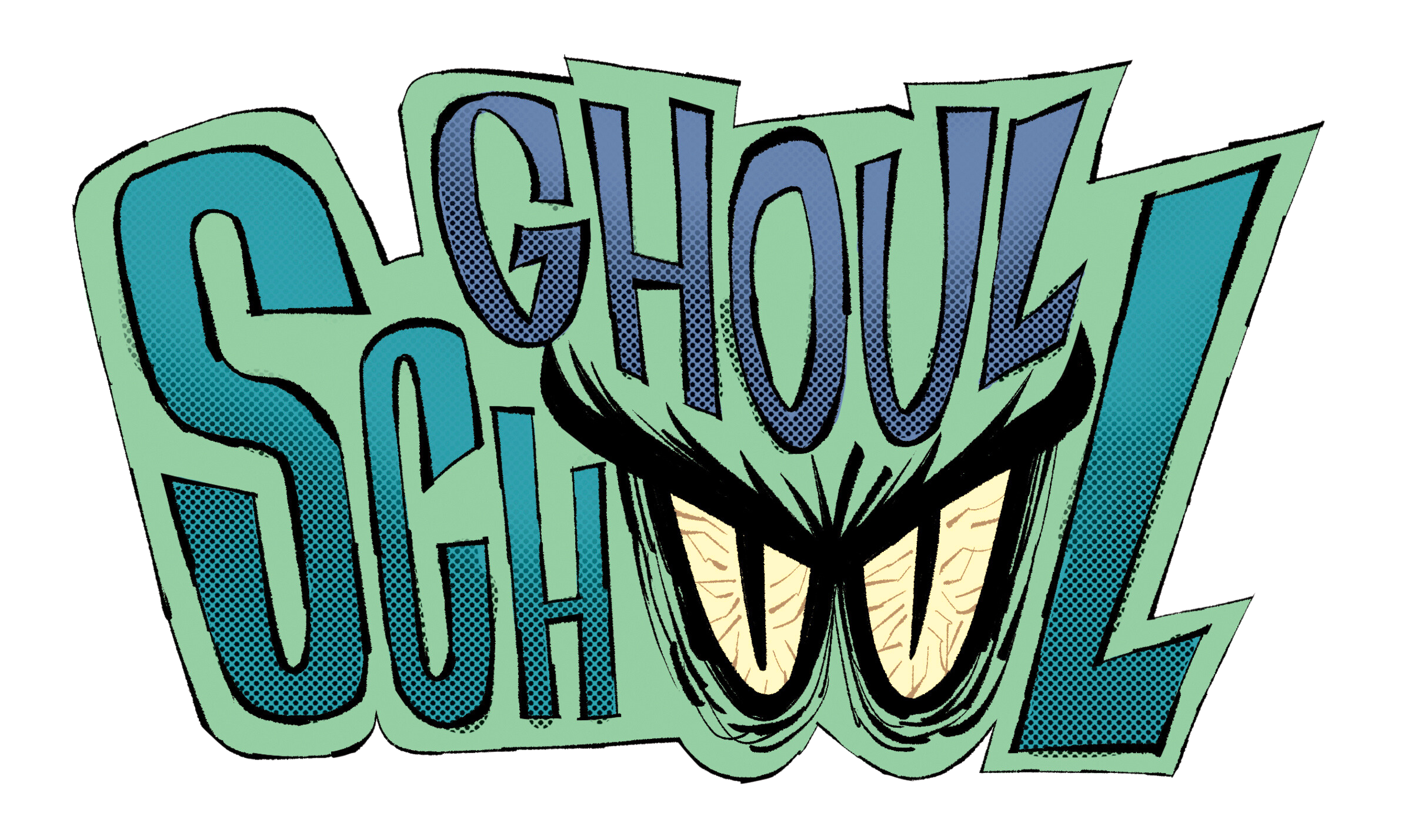
Graphic novels offer superhero help for struggling readers!
The graphic novel has become an invaluable tool for teachers working to help children improve reading comprehension and literacy skills.

So... what is a graphic novel?
"It's just a comic book, right?"
Well... yes... and no.
The graphic novel combines sequential artwork with dialogue to tell a story. While this is also true of traditional comics, graphic novels are not serial stories told in monthly installments.
A graphic novel is bound like any other book. It may collect a series of comic books, but graphic novels offer a complete story with a beginning, middle, and end. Unlike other books on the shelf, the visual elements of a graphic novel allow students to enjoy an immersive reading experience, inviting them to explore unique stories that can't be told in another medium.
Why do reluctant readers enjoy the graphic novel format?
It's easy to assume struggling students prefer graphic novels because they are an easy read with more pictures than words, but that's not the case.

While some children are language learners from Day 1, we know every child is different. Some kids begin their academic careers as visual learners. Graphic novels help these students keep pace with the other kids in class. Reluctant readers may turn up their noses at chapter books their friends enjoy, but these are the same students who find themselves immersed in the visual cues within a graphic novel. These books allow them to enjoy the story without feeling bogged down in the reading.
What are the benefits of reading a graphic novel?
Despite the headlines, some teachers still struggle to accept that graphic novels offer students a chance at "real reading." They worry children are only interested in the pictures and that comic books won't provide a chance to improve fluency. But studies show students learn just as much reading graphic novels as they do when reading more traditional books.
Increased Comprehension
For struggling readers, the illustrations in a graphic novel are visual cues that help provide context to better explain what is happening in the story. This helps visual learners to strengthen their comprehension skills. Honing these skills with a graphic novel gives these children a foundation to build on when reading traditional text in a chapter book or novel.
Improved Reading Fluency
Fluency measures the ability of a child to read quickly and accurately. It's a vital skill for students to master, but it's speed and comprehension that worry reluctant readers the most.
Struggling readers hate that it takes them so much longer to read than the other kids in class. Even worse, these children become increasingly frustrated when they realize they can barely recall what they were reading.
Luckily, the graphic novel format can be a life raft for kids who feel like they're drowning. The images in a graphic novel help students to better process the information on the page. The added help allows these struggling readers to improve fluency so they are more confident when asked to read traditional novels in the classroom.

Greater Reader Engagement
If we want to see our students become avid readers in life, kids need to have fun with the books we put in their hands.
Graphic novels are a great way to increase engagement in even the most reluctant readers. Many of these kids find getting through traditional novels to be a slog with nothing but one boring block of text after another. Meanwhile, graphic novels are visually stimulating. With something new to behold on every page, the cinematic storytelling techniques found in a graphic novel keep reluctant readers engaged so their focus isn't lost.
A recent survey of 300 reluctant readers revealed that 92% were more motivated to read for fun after reading graphic novels recommended by teachers in the classroom.
Enhanced Vocabulary Acquisition
Even with a reduced word count on the page, a recent study showed that students who spent just eight weeks reading graphic novels increased their vocabulary by an average of 25%.
Because graphic novels explore a variety of literary themes in every genre, readers are exposed to a wide variety of vocabulary words. While traditional novels require readers to use context clues within a sentence to determind a word's meaning, students can use the visual cues within a graphic novel to do the same thing. Building these visual literacy skills will only help improve their reading comprehension later in the school year.
Improved Writing Skills
Struggling readers become struggling writers.
But the graphic novel format can greatly improve a student's creative writing skills. After all, if graphic novels improve reading comprehension and vocabulary, they can only boost a student's work when sitting down to write a story for themselves
Bringing graphic novels into the classroom can help students to understand the concepts of plot and pacing. A good graphic novel features complex literary themes despite being an easier read. Oftentimes, young writers will model their work after a story they've read, leading to more nuanced writing from your students when they sit down at the blank page.
More than caped superheroes from Marvel and DC
Contrary to popular belief, graphic novels now offer much more than superhero stories. Featuring stories from all genres, the graphic novel section is the fastest-growing part of the library. From whacked-out comedies to faithful adaptations of classic literature, teachers can find books to match the interest of any students in class.
GHOUL SCHOOL combines the best of comic books, traditional novels, and audiobooks to engage reluctant readers!
This brand new series for kids use publishing techniques designed to turn the most reluctant readers into enthusiastic bookworms.
- Creepy music and Hollywood sound effects highlight a streamable podcast that offers children a read-along experience they will never forget
- Low page counts reduce intimidation. Short stories promise reluctant readers they won’t spend the rest of their lives with their nose buried in a book
- Big fonts let readers turn pages faster than normal. This provides the same dopamine hit they get when scrolling through their feeds
- Age-appropriate horror improves focus as new scares lurk around every corner
- Beautiful artwork on every page helps visual learners build context as the story unfolds
- Unexpected endings inspire children to continue with the series so this positive experience become the foundation of a reading habit
Join countless parents and teachers who have watched their kids become avid fans of this exciting new series. Grab a copy today!
Want even more?
Check out our list of 15 great graphic novels for kids.



